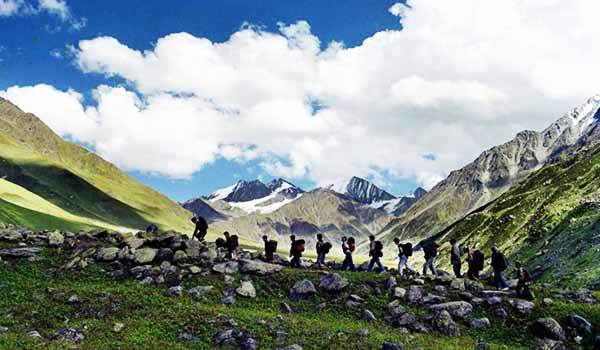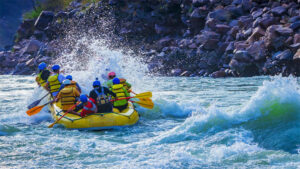Trekking tips are to help you with preparations for enormously varying distances, ascent, descent and altitude to ensure you get the maximum from your trekking trip. Here are few trekking training tips — including advice on trekking equipment, nutrition, hydration and specific trekking training — will help you prepare correctly for your trek so that you’re not left nursing blisters and sore legs after the first day.
 Prepare well for the trek
Prepare well for the trek
Ignorance and at times overconfidence have caused serious health problems for trekkers. It is essential to prepare yourself with pre-trek training. To know more about how to prepare for high altitude treks, click here. Collect information about your trek destination too. The learning exercise should include information about the terrain, climatic conditions, how to reach help in case of any emergency. Knowing about the terrain and the climatic conditions is necessary as it would help you pack the necessary clothes and footwear. Mental preparation is as important as physical training. Learning about the possible dangers and ailments that you can suffer on the trek, can help you to cope with it. Learn more about the ailments that you can suffer on high altitude treks.
Fitness is very important
Trekking involves a lot of strenuous activity especially when the trek is a technical or a difficult climb. Consult your family doctor before you embark on a trek. A person with heart disease, epilepsy, arthritis, renal ailments should not go on treks as such ailments could be aggravated and require emergency help which may be impossible to reach. Even if your planned trekking trip is 12 months away, it’s never too early to get started on your trek conditioning programme. Look to build your strength and fitness gradually, giving your body time to adapt to the new demands that you are placing on it. That way you can enjoy your trek training and avoid risking injury by trying to do too much too soon.
The fitter you are before you depart, the easier your trek will be. You will have spent a lot of time, effort (and probably money too!) to get to your trekking location, so it makes sense to get the most out of your trip by being in good shape and having suitable kit. By following the tips above, not only will you be well prepared for possibly a trip of a lifetime but you’ll get so much more out of your trekking experience.
Build leg strength with gym work
Leg strength will be key for your trek so in addition to walking training which will strengthen your legs, try and include either gym exercises such as leg presses and weighted squats, or lunges and bodyweight squats.
Build your walking training
Walking training will be the foundation of your training programme and it is important to build steadily towards the sorts of distances that you will be doing on your trek. Initially, intersperse training days with rest days but as your fitness improves, look to include some ‘back-to-back’ training days, which will more closely replicate your actual trek.
Train on similar walking terrain
Walking training is essential but it is also important to try and mimic the conditions that you will experience as closely as you can. Try and train on similar terrain to that of your trekking location. For example, for a trek that includes mountain climbing, try some weekend scrambling as part of your training. Also, practice in the same footwear and clothes and experiment with a loaded backpack — it makes a big difference to your speed over the ground.
Practice using your backpack
It’s likely that you’ll be carrying items such as food, drink, spare clothing and possibly more, so your choice of backpack is important. Look for models with adjustable chest and waist straps so that you can position it correctly on your back and also with external compression straps so that the load doesn’t shift. More specialist types have removable bladders for liquid consumption on the go, but remember that water and washing facilities may be limited, so sterilisation may be difficult. Practice using your backpack (loaded) as part of your training so that you are used to the weight and position.
Use walking poles
Walking poles make a big difference to your trek. Lightweight and telescopic, they ease the load on knees and thighs on descents and give you ‘two extra legs’ on steep climbs. They can also be used to help clear vegetation and have numerous uses in a campsite. Definitely one to try.
Hydrate yourself frequently when walking
Whether you are in a hot climate or not, your fluid requirements will increase significantly when trekking. Losses on the breath and from sweating will serve to reduce your blood volume, resulting in your heart having to work much harder. By the time you feel thirsty you will already be dehydrated so try and drink small, frequent quantities of water throughout the day. Carry out the urine test to monitor your hydration: a pale straw colour indicates that you are well hydrated, anything darker means that you need to drink more.
Fuel your trekking
Similarly to hydration, your energy requirements will increase whilst you are trekking. Aim to eat small, frequent meals and snacks on the go to maintain energy levels. Depending on the part of the world, your favourite snack-type foods may not be plentiful, but fruit is frequently available which is easy to eat on the move and excellent for an energy boost. During your training, experiment with eating ‘on the go’, so that you get used to the feeling of food in your stomach when you are trekking.
Choose the correct footwear for your trek
Good quality and appropriate footwear for your trek and your walking training is essential. A supportive hiking shoe with ankle protection is important but beware of ankle cuffs that are too high as they can irritate the achilles tendon at the base of your calf. Look for an ankle cuff that is scooped away at the back. Make sure that your trekking boots are thoroughly broken in and your feet have bedded in — the time for blisters is now, not during your trek. When purchasing your boots, try to shop in the afternoon when your feet have expanded slightly so that you get the correct size.
Follow the Guide or Leader
If you are new to trekking and exploring a new terrain, it is always best to tread the beaten path. Remember a wrong step in the Sahyadri or the Himalayan mountain range can result in you hurtling down a deep gorge.
Inform your family or friends before leaving on a trek
While leaving on a trek, do remember to inform your family or friends about your plans, fellow trekkers and their numbers. It would help in case you suffer an accident and are unable to reach for help.

